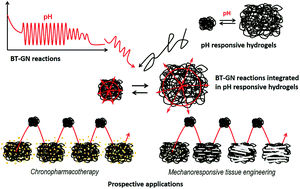History, versatility and future prospects of oscillatory carbonylation reactions of alkynes
Abstract
The paper looks back at three decades of oscillatory carbonylation reactions, summarises core findings and shares perspectives, with particular emphasis on applications. Oscillatory carbonylation reactions of alkynes display remarkable versatility in terms of substrates, catalysts and solvents. Furthermore, in addition to oscillations in pH and redox potential, these organic chemical oscillators can yield oscillations in turbidity and release heat from the reaction in a pulsatile manner. Recent research developments shift attention from small molecule substrates (e.g. phenylacetylene) and small molecule catalysts (e.g. palladium(II) iodide), to oscillatory carbonylation reactions using polymeric substrates (e.g. PEGylated alkynes) and polymeric catalysts (e.g. imine-functionalized chitosan-palladium) and use of these polymeric building blocks to develop oscillatory (pulsatile) materials fit for pulsatile drug release and other applications.

- This article is part of the themed collection: 2021 Reviews in RSC Advances


 Please wait while we load your content...
Please wait while we load your content...